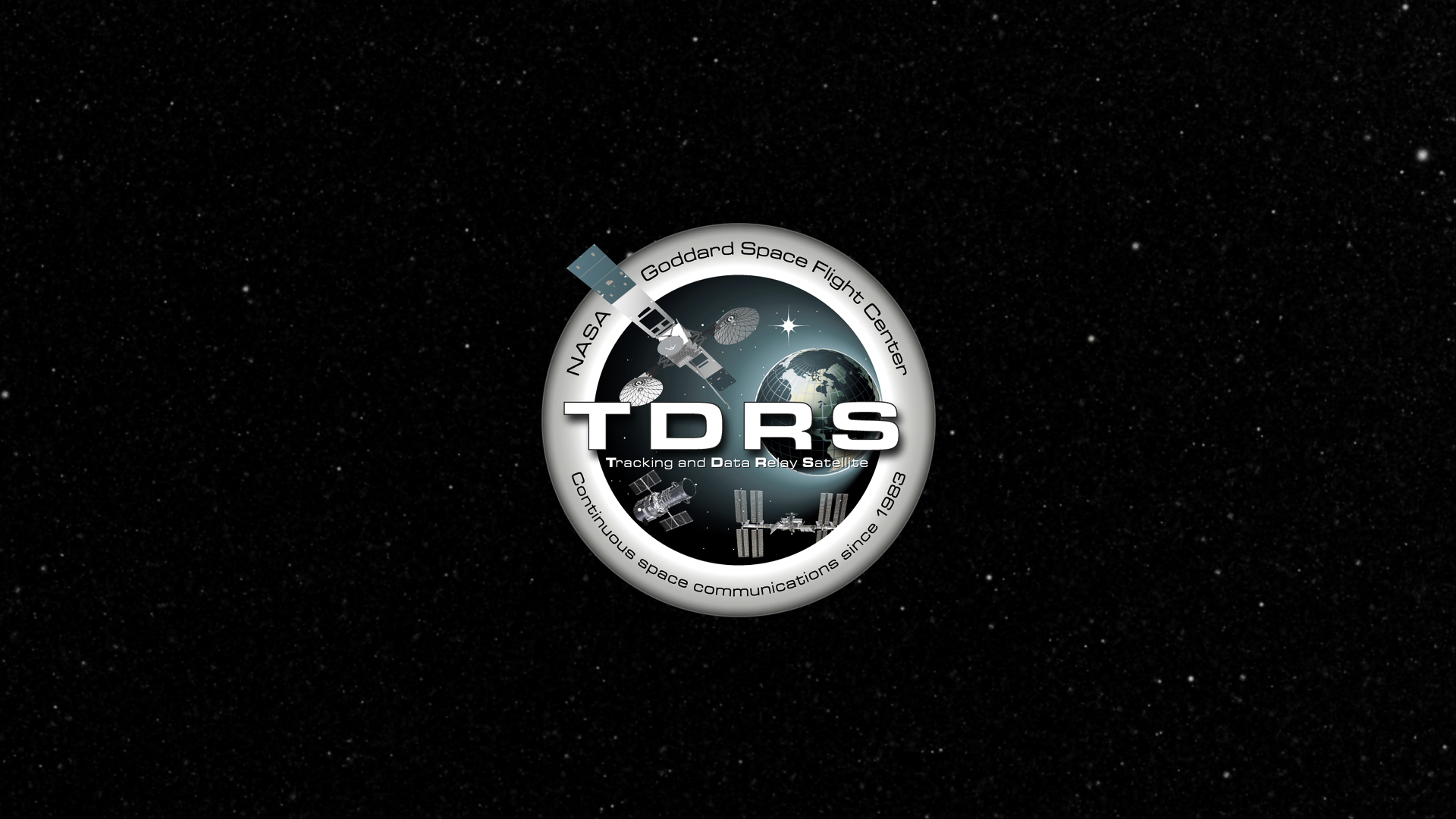Tracking Data Relay Satellite (TDRS) Orbital Fleet Communicating with User Spacecraft
The Tracking Data Relay Satellite (TDRS) fleet has provided spacecraft communications and tracking since the 1980's. Designed to replace most ground stations and provide longer periods of coverage, TDRS spacecraft have become an indispensable component of both manned and unmanned Earth orbiting space missions.
This visualization begins by showing how a typical spacecract (NIMBUS-7) communicated with the ground before TDRS. The spacecraft occassionally communicated with ground stations as its orbit briefly took it within range. This required ground stations to be spread all over the world and only allowed for sporatic communications between spacecraft and the ground.
As the animation continues, the TDRS fleet of spacecraft are introduced and a typical modern-day spacecraft, the Tropical Rainfall Measuring Mission (TRMM), is also introduced. As TRMM orbits the Earth, various TDRS spacrecraft are able to track and communicate with TRMM. This contact could be continuous, but for most spacecraft, continuous coverage is unnecessary. Constant communications between TDRS spacecraft and ground stations at White Sands and Guam are shown.
The visualization then adds many of the other TDRS users and shows how they communicate.
An additional ("extra") visualizaiton of the TDRS fleet communicating with user spacecraft is provided from a slightly different angle. These animations were created for a video supporting the launch of TDRS-12 (also called TDRS-L).
Visualization showing first how early spacecraft like NIMBUS-7 had to communicate with ground stations, second how a typical modern spacecraft communicates with the TDRS fleet, and finally how the fleet of users communicate with TDRS fleet.
Another view of the TDRS fleet communicating with user spacecraft

Print resolution still of NIMBUS-7 communicating with a ground station

Print resolution still showing TDRS fleet communicating with ground stations in White Sands and Guam

Print resolution still of TDRS fleet communicating with user spacecraft and ground stations
Credits
Please give credit for this item to:
NASA's Scientific Visualization Studio
-
Animators
- Greg Shirah (NASA/GSFC)
- Ernie Wright (USRA)
-
Video editor
- Stuart A. Snodgrass (HTSI)
-
Producer
- Stuart A. Snodgrass (HTSI)
-
Project support
- Cheryl Gramling (NASA/GSFC)
Release date
This page was originally published on Tuesday, January 21, 2014.
This page was last updated on Sunday, November 12, 2023 at 10:19 PM EST.
Datasets used in this visualization
-
CelesTrak Spacecraft Orbit Ephemeris
ID: 454This dataset can be found at: http://celestrak.com
See all pages that use this dataset -
BMNG (Blue Marble: Next Generation) [Terra and Aqua: MODIS]
ID: 508Credit: The Blue Marble data is courtesy of Reto Stockli (NASA/GSFC).
This dataset can be found at: http://earthobservatory.nasa.gov/Newsroom/BlueMarble/
See all pages that use this dataset -
Tycho Catalogue (Tycho 2 Catalogue) [Hipparcos: Telescope]
ID: 550This dataset can be found at: http://archive.eso.org/ASTROM/
See all pages that use this dataset -
GEOS-5 Cubed-Sphere (GEOS-5 Atmospheric Model on the Cubed-Sphere)
ID: 663The model is the GEOS-5 atmospheric model on the cubed-sphere, run at 14-km global resolution for 30-days. GEOS-5 is described here http://gmao.gsfc.nasa.gov/systems/geos5/ and the cubed-sphere work is described here http://sivo.gsfc.nasa.gov/cubedsphere_overview.html.
See all pages that use this dataset -
GSFC Flight Dynamics Facility Ephemeris
ID: 812
Note: While we identify the data sets used in these visualizations, we do not store any further details, nor the data sets themselves on our site.

